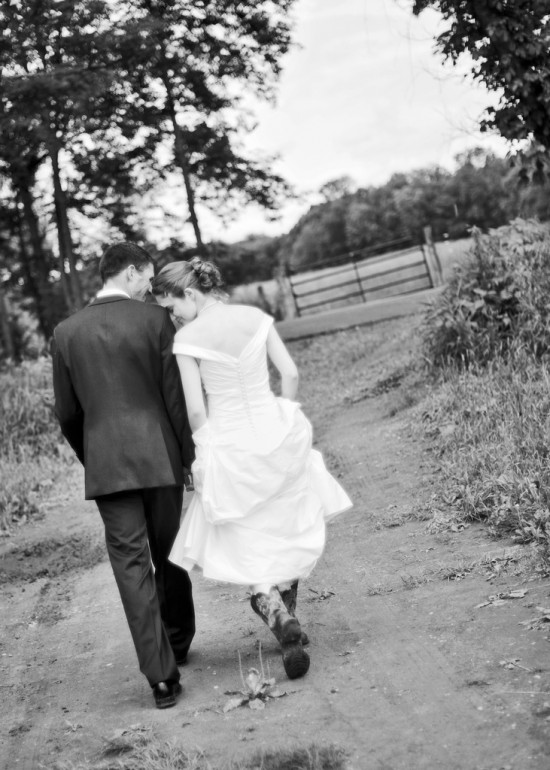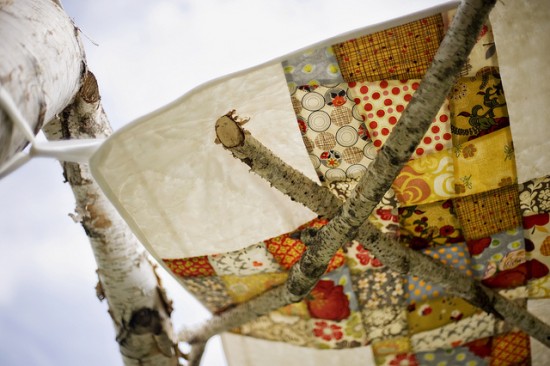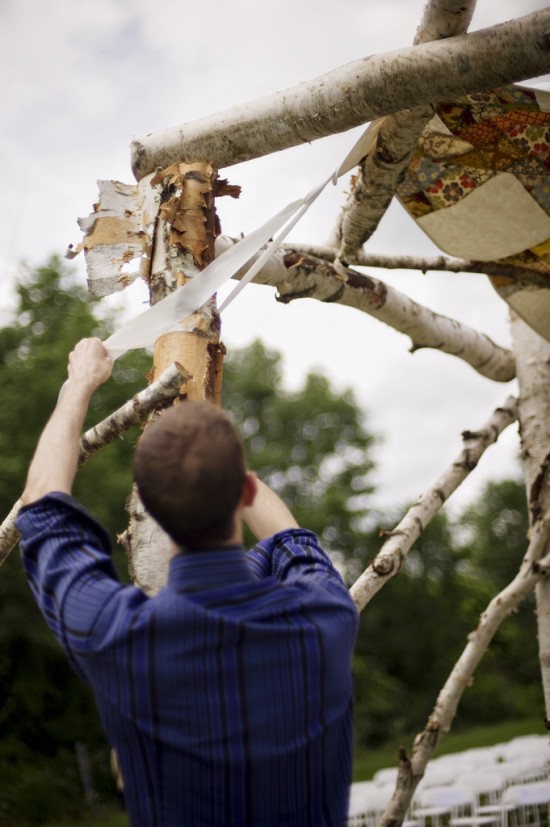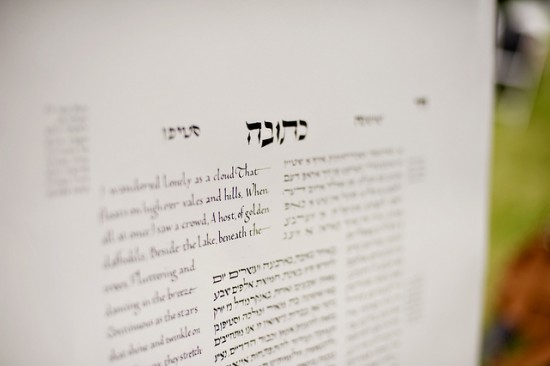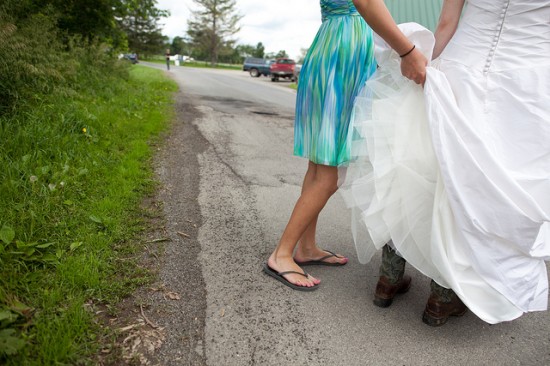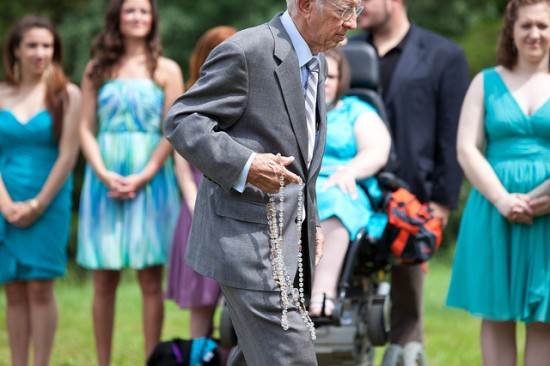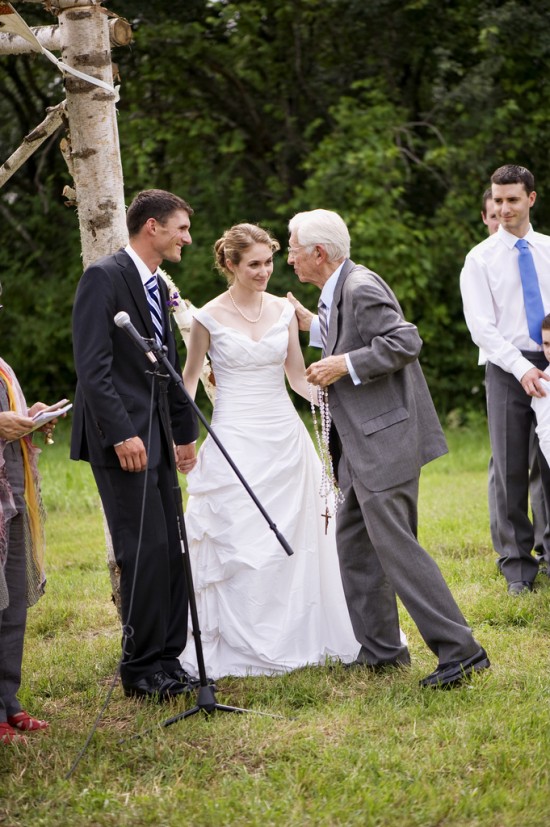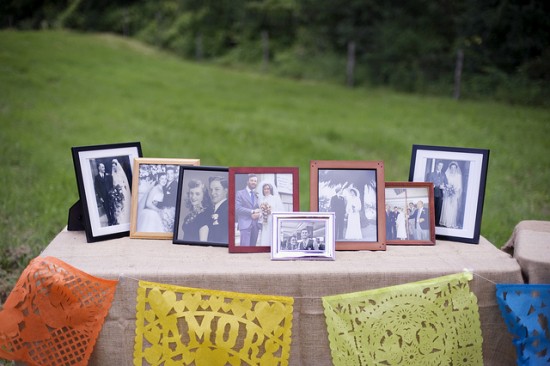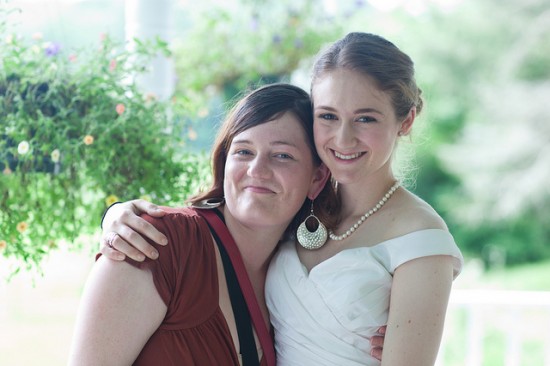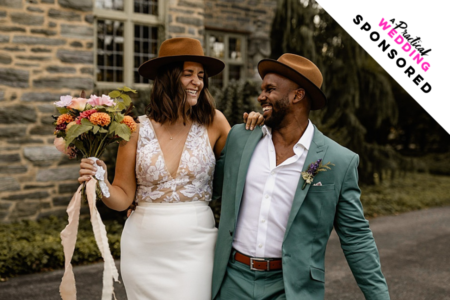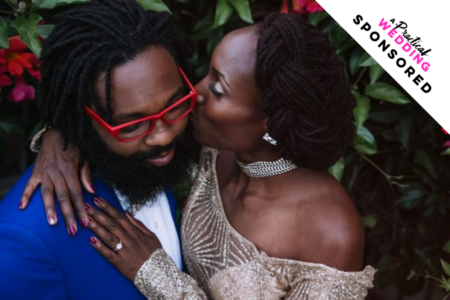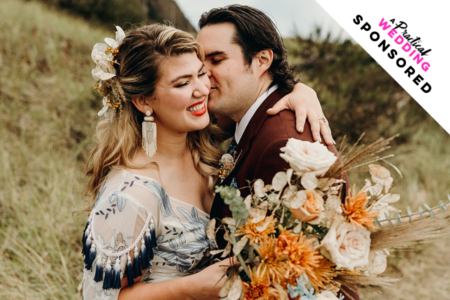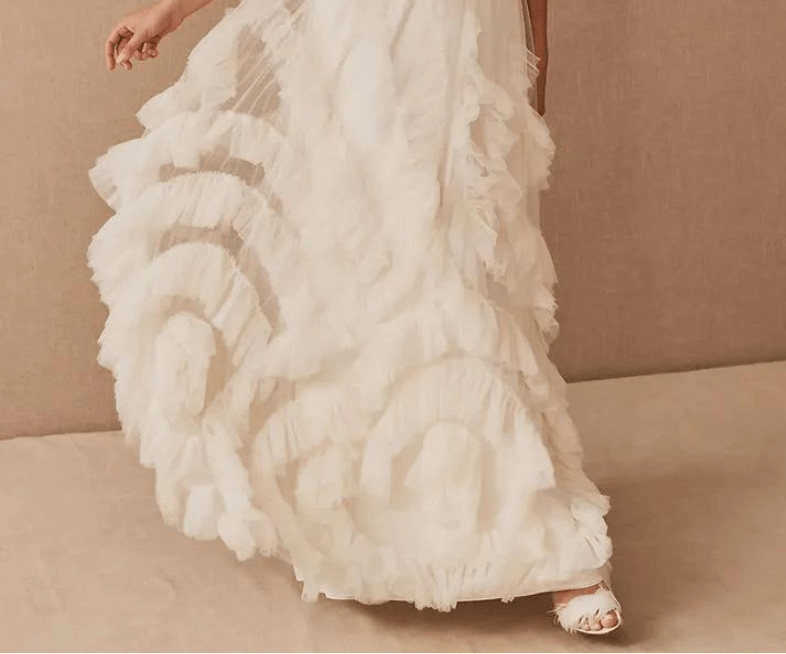Today long time reader, Zan, is here with her excellent wedding on the farm where she lives and her husband works (no random rustic-chic wedding here). It was shot by Katie Jane, so the pictures are gorgeous. You guys will remember Zan from her incredibly compelling story about marrying her cowboy husband at the courthouse when immigration issues suddenly loomed. Today, I’m deeply grateful to Zan for talking about building an interfaith wedding and an interfaith life. As someone who is part of an interfaith family, I think these issues are important and not discussed enough. Interfaith families and weddings come in many forms. Ours involved two deeply religious people, one faith, and two families’ traditions. Zan’s is different. It’s a way more complicated story and a profoundly good one.
I was raised Jewish, complete with Hebrew School, Bat Mitzvah, and tribal last name. My father is strongly attached to his Jewish “culture” but has always maintained that he can’t stand the “religion part.” This is not an uncommon stance among liberal American Jews but often elicits a confused eyebrow raise from non-Jews. My mom was raised as a good Catholic girl in Mexico with absolutely no intention of marrying a gringo, much less a Jewish one. She ended up converting to Judaism in order to marry my dad, also eliciting many confused eyebrow raises. I wound up studying critical theories of religion as an undergrad and am currently working on my Ph.D. in anthropology where I often explore the ways religion and cultures are so inextricably bound up with one another.
Then there’s Stephen, my dashing husband, born an atheist but raised by evangelical Christians in the kind of church where women cover their hair in the tradition of 1 Corinthians 11:2-13. My in-laws are not huge Charles Darwin fans and have had a lot of trouble accepting that their oldest son is gay. After he left home to be a cowboy, Stephen left his parents’ religion behind, too. Spending most of his time alone with his horse meant that working cattle became his religion. There aren’t many Jews in the part of England where he was raised, and there are even fewer in cowboy country. When he met me “challah” made as much sense as, “holla!”
As it happens, I’m an atheist too. If either one of us was a person of faith, I doubt we would have ended up together. In practice, then, the biggest “religious” difference between us is that I’m strongly attached to both my cultural and philosophical Judaism and to my Mexican Catholic heritage, but Stephen has no desire to maintain ties with his religious past. So the challenge in constructing our wedding ceremony was for me to integrate the elements of myself that I felt were important without leaving out Stephen or his family. How was I going to do that if the things that were important to me had absolutely no resonance for him?
First things first, I explained each tradition or custom that I had in mind. After that, if there was something he still couldn’t get behind, we didn’t do it. This was a good exercise for me too, since it forced me to really think hard about why I felt an emotional pull towards certain practices or symbols. Once we decided which elements we both wanted to incorporate, a large dose of creativity was called for. Case in point—our ketubah. It was important to me that we have one, but it wasn’t going to be meaningful for us to sign a piece of paper filled with Aramaic (though for some people, this is precisely what they like best about their ketubah!). Instead, we took education, a Jewish value that we both feel passionately about, and went from there. We used the structure of a page of Talmud (the quintessential Jewish book of learning) and filled in the blanks with writings we loved. We included a Wordsworth poem that Stephen knows by heart and loves deeply and is a nod to his English soul, a Yiddish poem that beautifully expresses how both of us feel about the natural world, bits of wisdom from the Tanakh (Jewish Bible) and Pirkei Avot (Jewish sages), and last but not least, our “contract” with one another—that’s what a ketubah is—in English.
Our chuppah was built by my dad and topped with a quilt made by Stephen’s mom. We included Stephen’s dad by having him open the ceremony with a reading from the Old Testament. We carefully selected a Bible passage with no God in it, which only confused my father-in-law. In order to compensate he threw an extemporaneous “Amen!” into our otherwise secular ceremony. Before we gave our declaration of intention or said our vows my maternal grandfather draped us with the family lazo. The lazo is a Mexican tradition—a double-yoked rosary that is used to physically bind the bride and groom during their wedding ceremony. The one we used is the same one that my great-grandparents, grandparents, parents, aunts, and cousins all used at their weddings. Yes, the lazo has a giant, golden, crucified Jesus on it. No, I could not imagine getting married without it.
As is often said around APW, the wedding is really only the beginning. You know what’s more complicated than planning an interfaith ceremony? Planning an interfaith life, thinking of how you’re going to live, grow, and build a family in a way that’s meaningful to both of you and the paths you come from. For me that is the big-picture message of an interfaith wedding because it is just one of the many times in our lives when we have to figure out how to best cultivate meaning for ourselves.
A lazo is just a string of beads unless it’s a chain that links you to four generations of your family. The rosary itself is just a string of beads unless you believe that it represents a connection to God. A chuppah is just a canopy structure unless you feel that it speaks to nearly six thousand years of cultural heritage and testifies to how much your mother-in-law cares for you, even though she doesn’t always understand you.
In putting together our ceremony we didn’t worry about the authenticity boogeyman, and I think that was a crucial part of the process. The most important thing I’ve learned about religion in my many years of education—and this goes for all religions—is that, no matter what you do, there will always be someone who scoffs and says, “You’re doing it wrong!” No doubt there are plenty of rabbis who would have lost their minds at seeing our mish-mash wedding and lots of priests who would have wagged their fingers at us; but those people are just people! Not one Christian, Jew, Muslim, Hindu or Buddhist has a lock on what’s right even though they all have their own (valid) perspectives. Have you ever heard the expression “five rabbis, six opinions”? It’s a personal favorite of mine. Incidentally the Catholic priest who attended our wedding, Stephen’s cousin, thought it was great.
We did things that were meaningful and authentic for us because it was our wedding; that meant incorporating the Mexican and the Jewish, the conservative in-laws and our commitment to marriage equality. It’s not impossible to make these combinations work, but I won’t pretend it’s seamless either. It’s plain to see where things were stitched together, but I actually think it’s nicer that way.
What I am happiest about is the way our interfaith ceremony is helping to carry us through our interfaith life. Our ketubah is now proudly framed and hanging on the wall. When I read it I think about all the care went into making it and feel revitalized about this complicated, bewildering, heady and wonderful thing called marriage. The chuppah quilt hangs in our bedroom, and we plan on taking it down only to wrap up our newborn children when they enter the world. In my daydreams we have a little row of pictures hanging in our house, of each child as a newborn, wrapped up in this quilt.
Oh, and those newborns? They’re proof that the interfaith-authenticity conundrum doesn’t end (or even start!) with the wedding, and that’s okay too. Our as-yet-imaginary children will be raised Jewish and we’ll have a Jewish home—granted, what that means is a whole other bag of bees—so in a way, they won’t be interfaith at all. Except that Stephen doesn’t plan to convert, we haven’t changed our position on God, and we are going to be open about all of that with our kids.
Photos by: Katie Jane Photo


